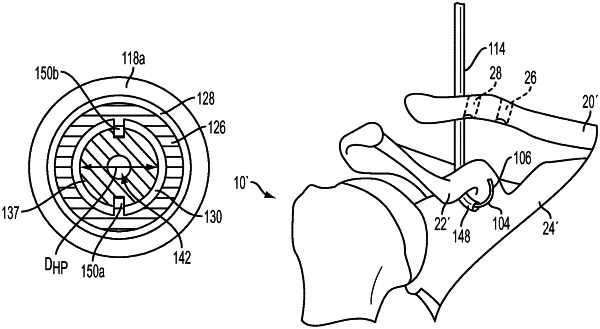| CPC A61B 17/0469 (2013.01) [A61B 17/0482 (2013.01); A61B 2017/00867 (2013.01)] | 20 Claims |

|
14. A surgical system, comprising:
a handle with lumen and an inner wall extending therethrough longitudinally, the handle having first and second ridges extending radially inward from the inner wall,
a first elongate member configured to be advanced into a body of a patient and positioned therein relative to an anatomical structure of the patient;
a second elongate member formed from a shape memory material, a distal portion of the second elongate member being biased to a curvature that is at least about 270° and is less than 360°, and the distal portion of the second elongate member being configured to move distally relative to the first elongate member from a first position, in which the distal portion of the second elongate member is disposed in a passageway of the first elongate member and does not extend distally beyond the first elongate member, to a second position, in which the distal portion of the second elongate member extends distally beyond the first elongate member, wherein moving the second elongate member from the first position to the second position is configured to automatically cause the distal portion of the second elongate member to assume the curvature;
an actuation member with first and second notches, the first and second notches configured to slidably mate with the first and second ridges of the handle; and
a suture configured to releasably engage the second elongate member and to move with the second elongate member from the first position, in which the suture is disposed within the passageway of the first elongate member and does not extend distally beyond the first elongate member, to the second position, in which the suture extends distally beyond the second elongate member along the curvature of the distal portion of the second elongate member.
|